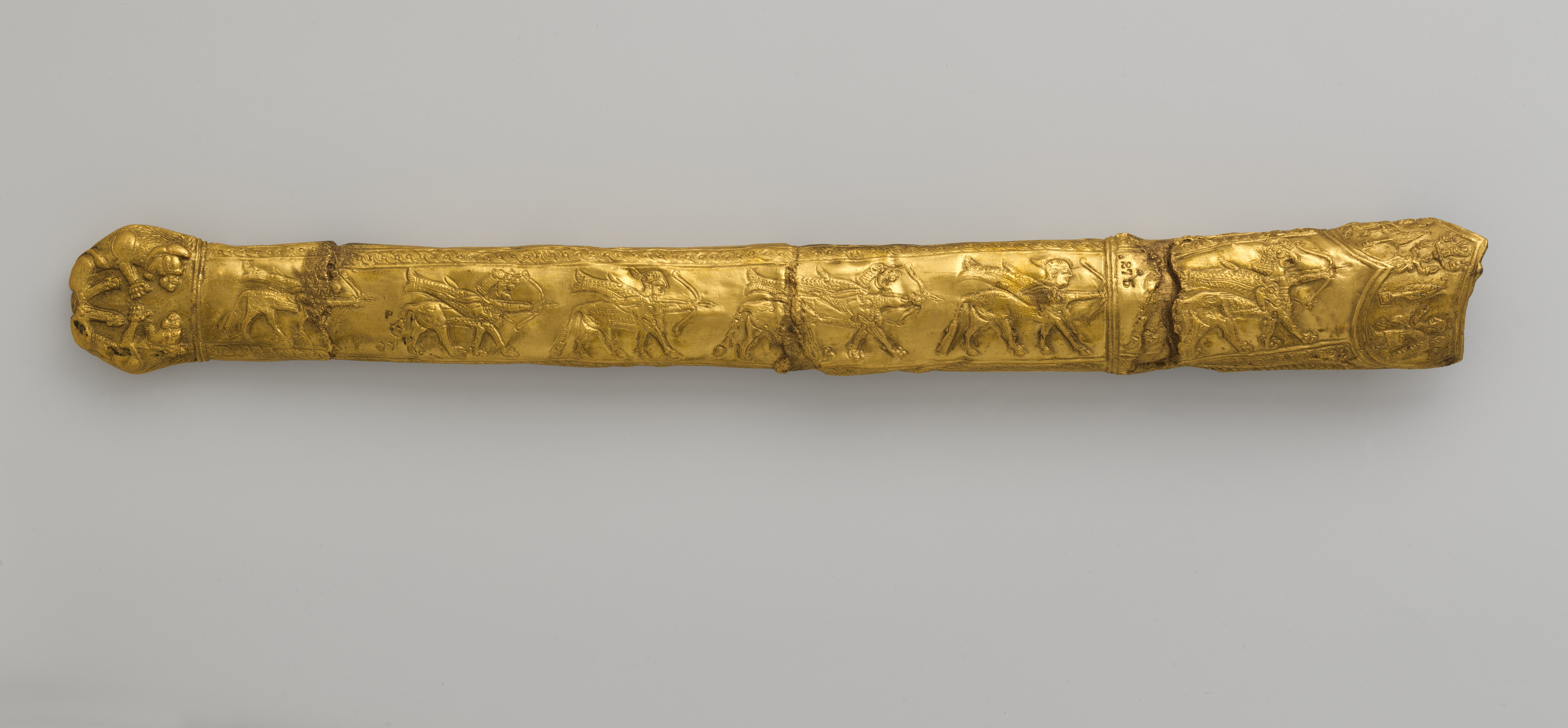Reproduction of a Scythian sword sheath
Not on view
Electrotyping is a chemical process used historically to make high quality reproductions of works of art. During the Victorian era, one of the main producers was Elkington & Co. of Birmingham. They were licensed by the South Kensington Museum of London (now the Victoria & Albert Museum) to produce replicas of objects from royal treasuries and museums across Europe. The electrotypes approved by the Department of Science and Art, a British governmental agency, carry Messrs. Elkington’s mark in the form of an official stamp in metal.
This modern electrotype is a copy of a gold sheath in the Hermitage Museum, St Petersburg. The original, known as the Melgunov scabbard, was found with its iron sword in the first kurgan excavated in the Dniepr region in 1763 by General Alexey Melgunov (1722-1788). The rich burial, dated to the late seventh to early sixth century B.C., notably yielded objects showing influence from Urartu, such as the decoration of fantastic creatures on the sheath. At the time of the excavations the Scythians were unknown to scholars and therefore the significance of the discoveries was not recognized.
In the nineteenth century, many museums collected copies of ancient and historical works of art with the aim of presenting outstanding works to a broader public and to serve as inspiration for artists and manufacturers. The Metropolitan Museum of Art, founded in 1870, began to acquire electrotypes in its first decade. In 1883, Henry Marquand, a collector and early patron of the Museum, funded a large purchase from Elkington & Co. of nearly three hundred pieces. Today, these works are part of many departments in the Museum and along with plaster casts reflect the history of collecting and the role of the museum as a locus for the teaching of art history.
Due to rights restrictions, this image cannot be enlarged, viewed at full screen, or downloaded.
This artwork is meant to be viewed from right to left. Scroll left to view more.



